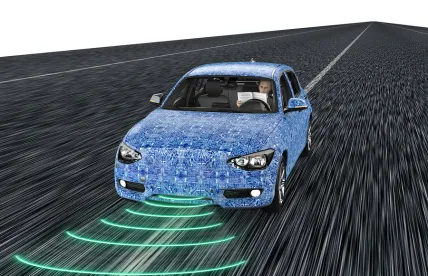Key Developments
-
Foley & Lardner shared highlights from the firm’s Automotive Forum held on September 14th to coincide with the return of the 2022 North American International Auto Show.
-
S&P Global Mobility predicts U.S. new light-vehicle sales will reach 1.105 million units in September, representing a SAAR of 13.4 million units.
-
Ford announced inflation-related third quarter supply costs will be approximately $1 billion higher than anticipated. The automaker also noted that certain parts shortages will result in 40,000 to 45,000 unfinished vehicles at the end of the quarter.
-
A number of automotive suppliers contacted by Reuters indicated they have raised prices on parts in the range of 7% to 20%, amid high costs for energy, labor and raw materials.
-
The California Air Resources Board is expected to consider a proposal which could ban the sale of diesel big rigs by 2040.
-
Effective later this year, GM’s salaried employees will be required to work on-site three days a week, as part of an effort to “pivot to a more regular in-person work cycle.”
-
According to a recent survey by the German Association of the Automotive Industry, 10% of companies in the nation have cut production because of high energy costs and another 30% are considering reducing output.
-
Due to the risk of natural gas shortages and energy rationing in Germany, Volkswagen could shift some of its production to facilities in other regions, and Mercedes-Benz increased parts inventory to support its plants in the U.S. and China.
-
The National Transportation Safety Board announced recommendations for all new vehicles to be equipped with passive alcohol-detection systems, advanced driver-monitoring systems, or a combination of the two in order to limit or prevent vehicle operation by impaired drivers.
-
Electric vehicles and low emissions technology:
-
A new report from Alliance for Automotive Innovation estimates U.S. sales of battery, plug-in hybrid and fuel cell electric vehicles reached over 224,000 units and represented 6.6% of new light-duty vehicle sales in the second quarter of 2022.
-
BloombergNEF predicts 52% of passenger cars sold in the U.S. will be electric vehicles by 2030, up from a previous projection of 43%.The revision was attributed to incentives in the Inflation Reduction Act.
-
The Biden Administration approved 35 of the EV infrastructure deployment plans submitted by states as part of the National Electric Vehicle Infrastructure Formula Program. This program provides over $900 million in funding in FY22 and FY23, as part of a broader package under the Bipartisan Infrastructure Law which makes $5 billion available over five years.
-
Hertz will order up to 175,000 EVs from GM over a five-year period in North America, beginning with the Chevy Bolt EV and Bolt EUV in the first quarter of 2023.
-
Ford began construction on its $5.6 billion BlueOvalCity complex in Tennessee, which is described as the “largest, most advanced auto production complex” in the company’s history. The site will produce batteries and EVs beginning in 2025.
-
Prices for lithium carbonate in China have more than tripled in the past year due to a combination of high demand and production constraints, according to analysis in Bloomberg.
-
GM and the Environmental Defense Fund released joint recommendations in support of federal emissions standards which would enable at least 50% of new vehicles sold by 2030 to be zero-emission models.
-
Market Trends and Regulatory
-
Four U.S. federal agencies signed a memorandum of understanding to coordinate on policies which support the implementation of “low and zero carbon transportation solutions and associated infrastructure.”
-
Gabe Klein was named the head of the newly formed Joint Office of Energy and Transportation, which will oversee projects including the deployment of $7.5 billion to build a national electric vehicle charging network. Klein previously had leadership roles at transportation departments in Chicago and Washington D.C.
-
According to estimates in Bloomberg, earnings for freighters which move autos and industrial goods have reached a two-decade high, due to a combination of limited vessel supply and steady demand.
-
Reuters reports over a dozen automakers have signed agreements with Avanci, which describes itself as a “one-stop marketplace” for licensing patented wireless technology.
-
The Vehicle Data Access Caucus was recently formed by U.S. Rep. Earl Carter (R-GA) to address policy issues related to data privacy and the control of data generated by vehicles.
-
Preliminary estimates from the National Highway Traffic Safety Administration indicate there were over 20,000 fatalities on U.S. roads between January and June of this year, representing an increase of 0.5% from the same period last year. The agency noted the second quarter of 2022 had a decline in fatalities following seven consecutive quarters of year-to-year increases.
OEMs/Suppliers
-
Reuters reports Toyota and Honda will reduce production at certain plants next month, due to supply chain constraints and shortages of parts including semiconductors.
-
A unit of Bosch will invest approximately $160 million in a new plant in Queretaro, Mexico, intended to focus on exports to the U.S. and Canada.
-
Aptiv will acquire Intercable Automotive Solutions, an Italy-based provider of automotive power distribution and connection technologies, for €595 million. The deal is expected to strengthen Aptiv’s “position as a full system supplier for electric vehicle manufacturers.”
-
BorgWarner will acquire the vehicle electrification business of Hubei Surpass Sun Electric Co. for 410 million yuan, or roughly $57.3 million, in a deal which is anticipated to expand market capabilities in China.
-
Ford is experiencing supply shortages of model nameplates and company logo badges for certain vehicles, according to sources quoted in The Wall Street Journal.
Connected/Autonomous Vehicles and Mobility Services
-
GM’s autonomous driving subsidiary Cruise plans to expand its robotaxi service to Phoenix, Arizona and Austin, Texas in the coming months. The business unit also intends to achieve a revenue target of $1 billion by 2025.
-
The New York Times provided an update on recent developments in advanced driver assistance systems (ADAS) as part of a series on the Future of Transportation.
-
The 2023 Lincoln Corsair crossover will become the sixth vehicle in Ford’s lineup to offer the automaker’s advanced driver assistance system.
-
Self-driving technology developer Pony.ai will partner with Pima Community College to test autonomous vehicles with safety drivers behind the wheel in Tucson, Arizona.
Electric Vehicles and Low Emissions Technology
-
A report in The Wall Street Journal raises concerns about automakers’ ability to swiftly capitalize on growing consumer interest in EVs amid market challenges, including limited production volumes, parts shortages and supply chain constraints.
-
Utility Dive reports supply chain constraints for building materials such as steel and concrete may impact timelines for building electric vehicle battery manufacturing facilities and charging infrastructure.
-
U.S. e-bike sales are projected to reach three million units annually by 2025, according to data from the Light Electric Vehicle Association excerpted in The Wall Street Journal.
-
Benchmark Mineral Intelligence estimates over 300 new mines for graphite, lithium, nickel and cobalt will be required by 2035 to support anticipated demand for electric vehicle and energy storage batteries.
-
Approximately 15,000 people attended The Battery Show held September 13-15 in Novi, Michigan, representing an increase of 64% from last year and up by nearly 50% from pre-pandemic levels. According to industry representatives quoted in Bloomberg, the increase in attendance was attributed to an increase in market growth and government support, including provisions in the Inflation Reduction Act.
-
Bosch cautioned the auto industry against an over-reliance on battery cells as the only potential power source for EVs, citing supply risks associated with not preparing for alternative scenarios such as fuel cells.
-
Cummins showcased a number of its zero-emissions technologies at the IAA Transportation 2022 trade show, including its fourth generation hydrogen fuel cell engine for medium- and heavy-duty trucks and buses, as well as a newly introduced lithium iron phosphate (LFP) battery pack.
-
Bloomberg reports manufacturers including Daimler Truck and Volvo are pursuing the development of both battery electric and hydrogen fuel cell trucks, due to factors that include the difficulty of predicting which technology will be the most cost effective and energy efficient in the future.
-
GM announced a $760 million investment in its Toledo, Ohio propulsion plant to produce drive units used in future Ultium-based battery electric trucks. The automaker also announced an investment of nearly $500 million in its Marion, Indiana metal stamping plant to support future products including electric vehicles.
-
A new study by Stanford University researchers published in Nature Energy predicts rising EV ownership could increase power demand in the western U.S. by up to 25% by 2035.The study recommends a shift from nighttime EV charging at home to midday hours at public charging stations when wind and solar power are plentiful.
-
San Francisco-based TeraWatt Infrastructure, which builds EV charging infrastructure for fleets, raised $1 billion of Series A venture funding. The company plans to use the funding to expand its portfolio of commercial charging centers, beginning in the western U.S.




 />i
/>i

